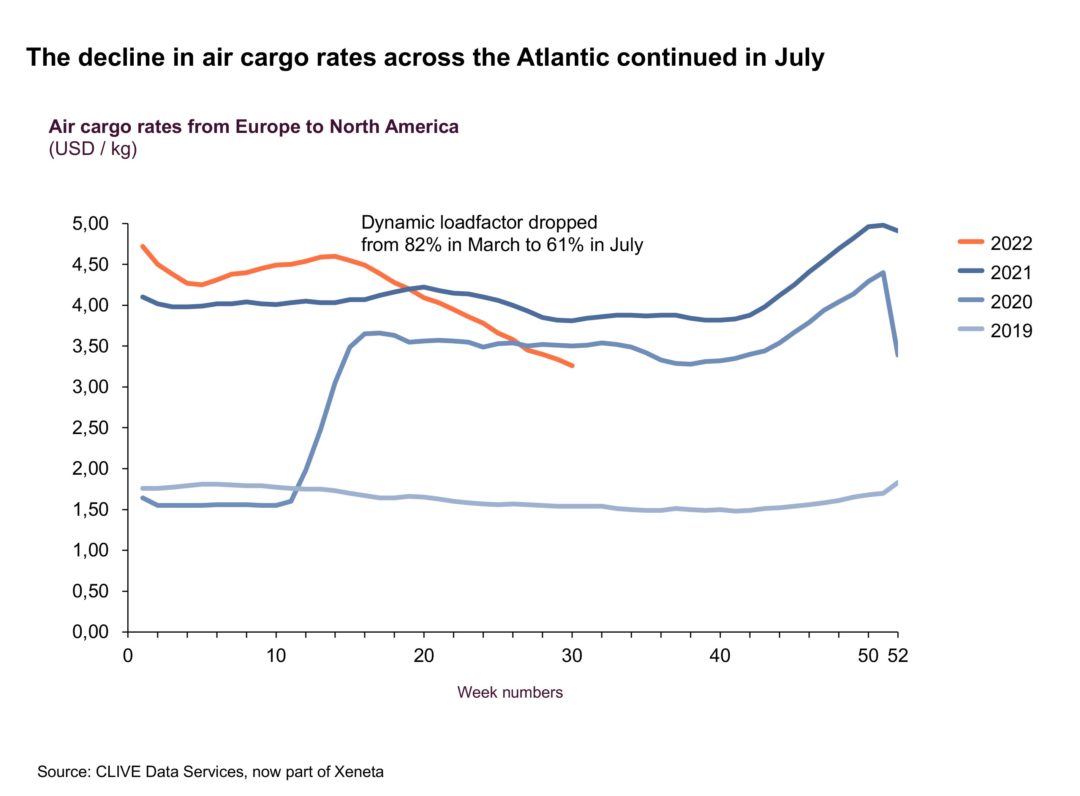Air freight rates slump from historic highs
Industry hit by economic and political uncertainties on world trade, Clive says.

Flight disruptions have roiled airport travel patterns in recent weeks, and statistics now show that trend is one of several variables that have combined to slow down the global air cargo market for freight as well as passengers.
The global air cargo sector saw freight demand as measured by volume drop 9% in July compared to the same month last year, amidst a continued slowing down of load factor, capacity, and airfreight rates, according to an analysis of seasonally adjusted general air cargo market performance data from Clive Data Services, a unit of ocean and air freight rate analytics provider Xeneta.
In addition to volume, airfreight rates also continued to fall in July, relative to the June 2022 year-over-year analyses, although they remain historically high, at 11% above the same month a year ago and 121% compared to pre-pandemic July 2019.
The slowdown in the global air cargo market since March is caused by a “multitude of disruptions outside of the industry’s control,” Niall van de Wouw, founder of Clive and now Chief Airfreight Officer at Xeneta, said in a release.
Those variables include uncertainties caused by the continuing war in Ukraine, the escalating “cost of living” and its impact on both household budgets and business performance, and severe operational challenges at airlines and airports due to significant shortages of ground staff.
“There are many dark clouds hanging over the air cargo industry given the state of the world right now. Volumes are subdued, and while air cargo rates are still elevated, they are slowly but surely easing back towards pre-Covid levels. From a rates point of view, indicators suggest the market has yet to bottom out,” van de Wouw said.
“The slow slides in rates, compared to 2019 and 2021, continues by a handful of percentages each month. In January, rates were +156% compared to the same month in 2019. Now this figure is 121% or a reduction of 35% pts on a global scale.”
Related Articles
Copyright ©2024. All Rights ReservedDesign, CMS, Hosting & Web Development :: ePublishing